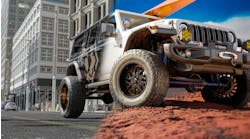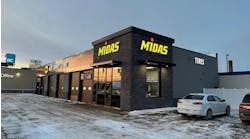If we need a reminder of the growing popularity of light truck tires, the increase in annual shipments is a good indicator.
In the replacement market, light truck tire shipments grew by 30.7% from 2012 through 2022, with total numbers growing from 28.3 million units in 2012 to 37 million tires in 2022.
The increase is even greater in original equipment, where LT shipments grew by 51.2% over that same time period — from 4.1 million units to 6.2 million.
With the ongoing popularity of larger vehicles and pickup trucks, and fewer sedans on the road, it stands to reason that the popularity of LT tires is here to stay. That means tire technicians need to be well versed on how to mount and balance these larger and heavier tires, and how to avoid damaging their larger and more expensive wheels.
We turned to the experts who produce and market the industry’s mounting and balancing equipment to gather tips on providing top tier service for customers.
Jim Hudson, product manager for tire changers at Hunter Engineering Co., offered these suggestions:
- Use lifting aids wherever possible to make handling the tires easier. This includes a wheel lift on the tire changer and balancer, as well as top acting and bottom acting press devices on the tire changer to help get them positioned.
- Bottom bead demount can be especially challenging on large, heavy tires. A tire changer with a lower roller or locking demount disc will make short work of it, though.
- Larger, aftermarket LT wheels are sometimes reverse drop center. A center clamp tire changer with a flange plate is the best way to handle them without fear of damage.
- Bead sealing can be a challenge, especially in aftermarket fitments. A powerful blast inflation system like Hunter’s FastBlast can save a lot of time and energy getting large tires to take air.
- Be prepared for large center bore wheels with the proper centering kits for balancing. Hunter’s balancer kits are universal to all balancers in our line and offer excellent coverage in that range. The same can be said for center clamp tire changers. This is especially true if one might find themselves servicing medium duty assemblies as well, like the common 19.5-inch tire.
Chuck McCourt, president of The McCourt Companies, says there are two golden rules for mounting and balancing tires that apply in every application — and that includes light truck tires.
The rules are to apply “a good rubber lube and keep the bead in the drop center.
“The same rules apply whether it’s a 14-inch tire or a 22 — it’s just harder to keep it in drop center. You can’t let it ride up. You’ve got to hold it down in a drop center. You have a lot of tools to help you, but if it’s not drop center, you’ll tear beads and damage wheels.
“But, if it’s at drop center, it gives you the space you need.”
McCourt says the tire is naturally going to lift up as it goes around on the tire machine, and technicians need to be vigilant in watching it. “That’s where most technicians (make a mistake.) They don’t watch it.”




